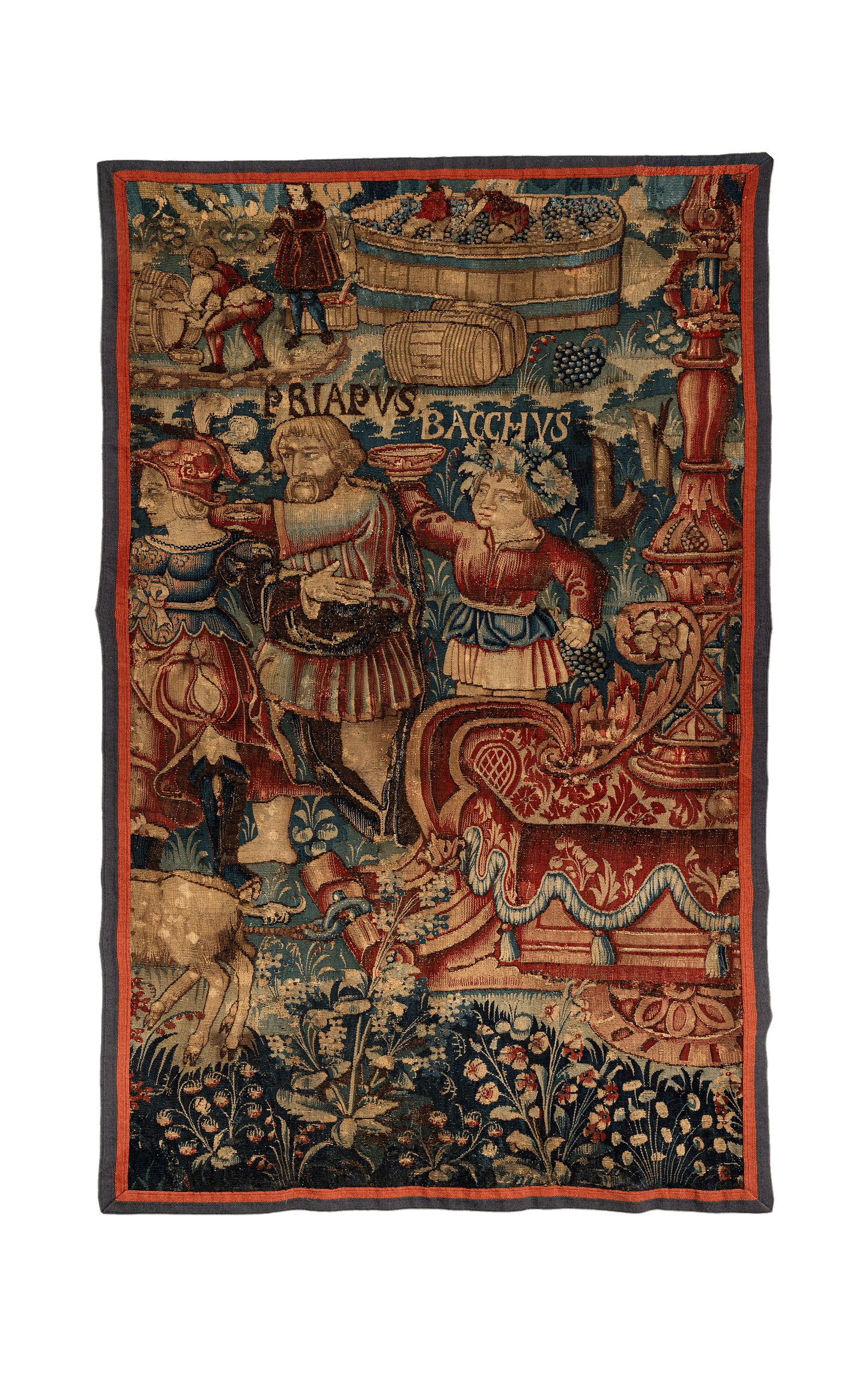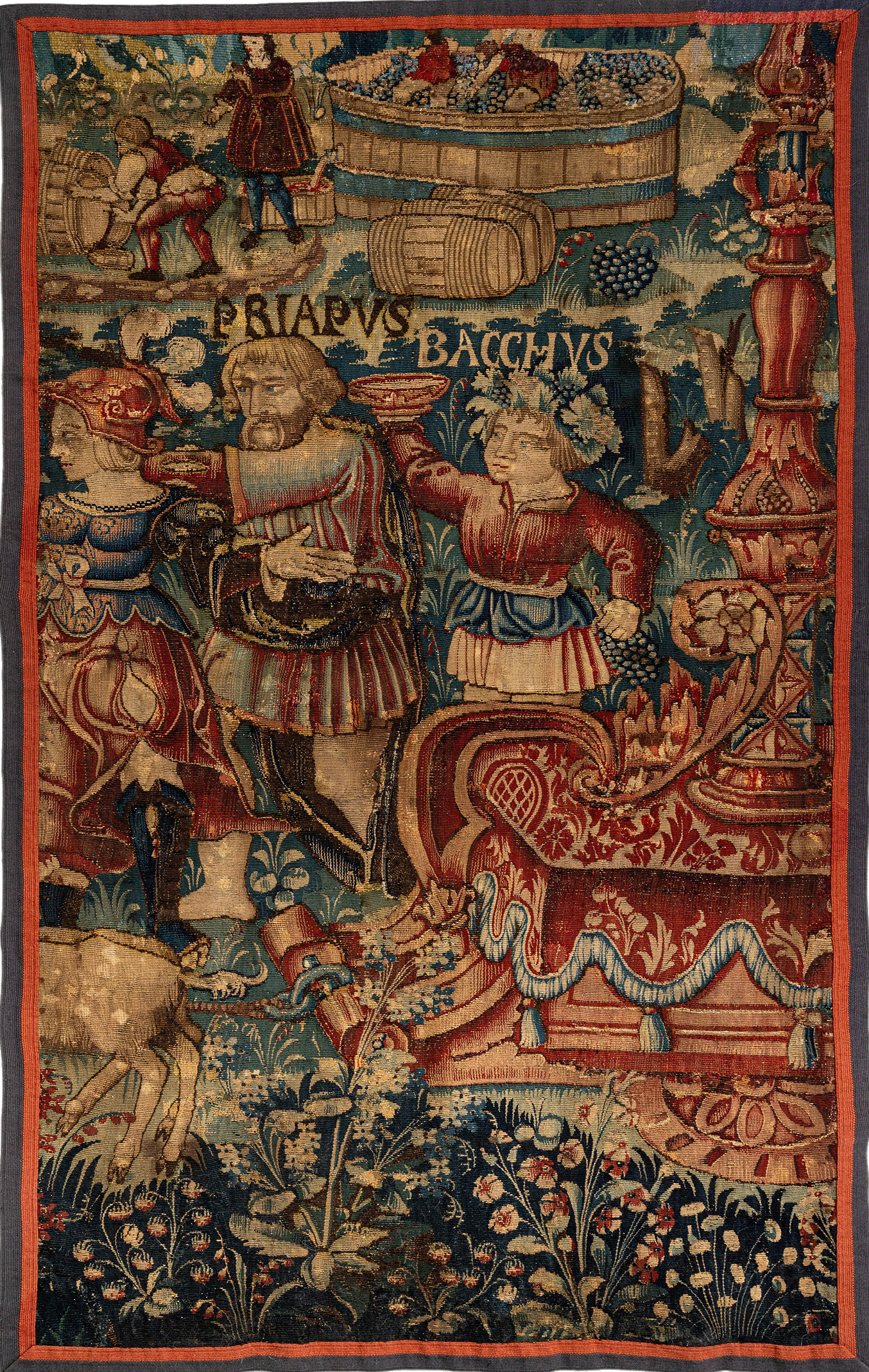Romantic English
Threads of Dionysian Delight: A Verdant Tapestry of Bacchus and Bounty RE845212
Threads of Dionysian Delight: A Verdant Tapestry of Bacchus and Bounty RE845212
Couldn't load pickup availability
Ah, what a delightful artifact we have before us, a tapestry that seems to beckon us into the very heart of a verdant, mythological revelry! This exquisite work of textile art—indeed, a woven narrative of astonishing complexity—whispers tales of Bacchic pleasures, the kind of hedonistic indulgence that only the gods themselves could sanction.
Let us first consider the overall composition. The tapestry is resplendent with lush greenery, a veritable Eden of flora that frames the scene, as if nature herself has woven this piece with tendrils of vine and leaf. The borders, lined in a vibrant yet restrained red, hold the composition together, serving both as a literal and metaphorical containment of the wild exuberance within.
Now, at the center of this verdant world stands Bacchus—or rather, his dual persona, marked in Latin as "PRIAPUS BACCHUS"—the god of wine, festivity, and unrestrained pleasure. He is depicted in the robust, slightly rotund form that one would expect of a deity whose domain includes endless feasting and drinking. His head is crowned with a wreath of grape leaves, symbolizing his intimate connection to the vine, that most revered of plants in ancient mythology.
To Bacchus' right, we observe a figure in medieval garb, holding a massive goblet, as if ready to toast to the bountiful harvest. This goblet, one might imagine, brims with the finest vintage, its rich, crimson liquid reflecting the prosperity that Bacchus bestows. The scene is not merely a depiction of myth but a celebration of abundance, a reminder of the cyclical, life-affirming nature of agriculture—after all, what is a good harvest without a good drink?
Above, workers tread the grapes in a large wooden vat, a nod to the industrious mortals who transform Bacchus' gifts into the nectar of the gods. These figures, though smaller in scale, are critical to the narrative; they represent the eternal link between divine favor and human toil. Notice the attention to detail—the baskets overflowing with grapes, the robust barrels waiting to be filled—all rendered in rich, earthy tones that contrast beautifully with the deep blues and greens of the foliage.
Beneath Bacchus, the tapestry's lower section blooms with wildflowers, grasses, and shrubs, each leaf and petal meticulously detailed. This floral tapestry within a tapestry echoes the abundance above, creating a sense of balance between the human activities and the natural world. The animals, a subtle yet significant presence, roam freely, their inclusion a reminder of the interconnectedness of all life, under the watchful eye of Bacchus.
The craftsmanship here is nothing short of extraordinary. The weavers, likely from the Flemish or French ateliers known for such works, have employed a rich palette—deep blues, earthy reds, vibrant greens—to bring this scene to life. The textures are almost tangible: the smoothness of the goblets, the roughness of the wooden barrels, the softness of the leaves. This tapestry would not merely have adorned a wall; it would have transformed a space, infusing it with the spirit of the harvest, the joy of life, and the ever-present reminder of the divine.
In sum, this tapestry is not just a decorative object but a visual hymn to Bacchus and the bounties he represents. It is a celebration woven in wool and silk, a masterful interplay of myth, nature, and human endeavor. What a joy it must have been, and still is, to stand before it and be swept away into the vineyard of the gods!
Share




